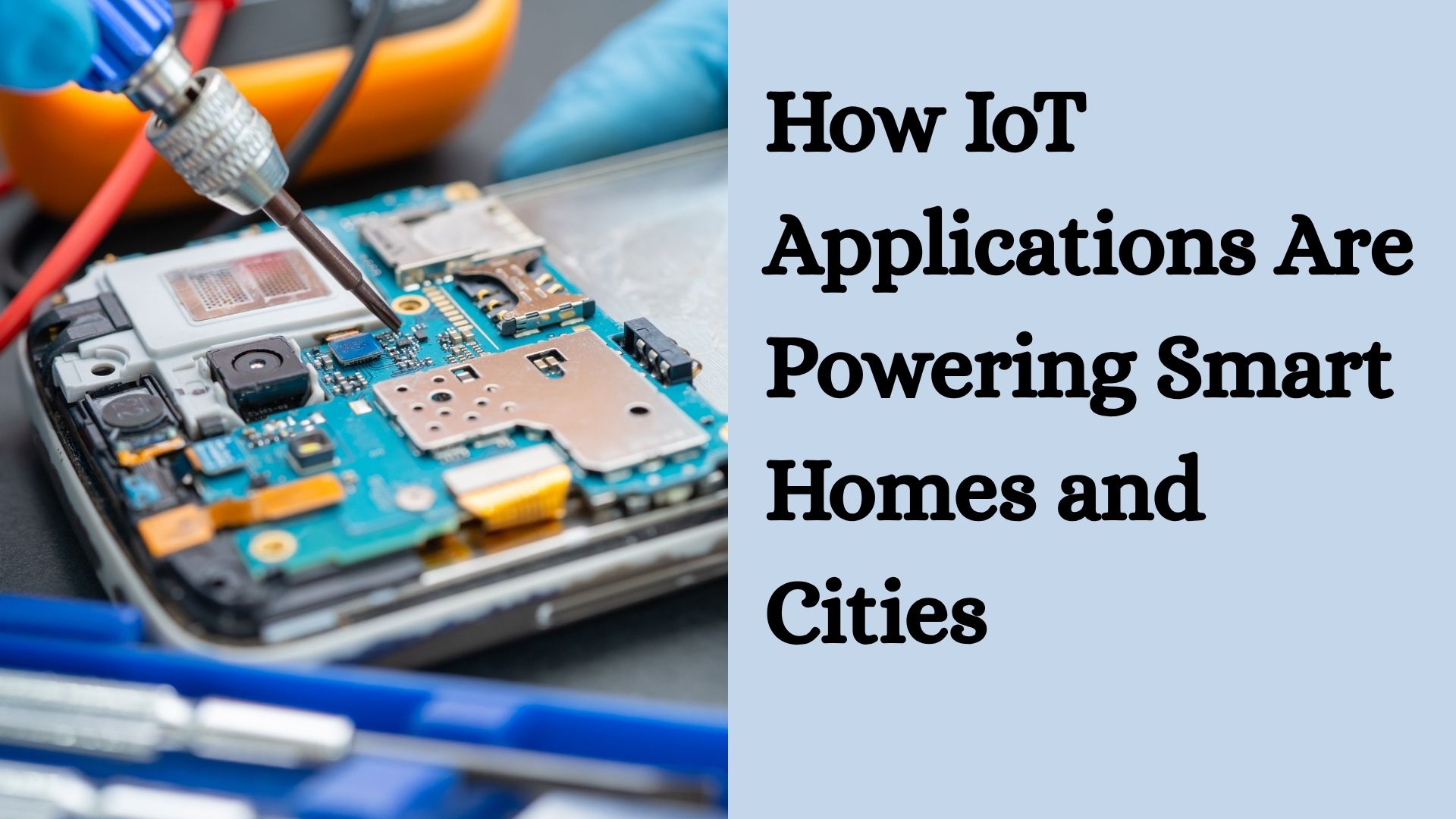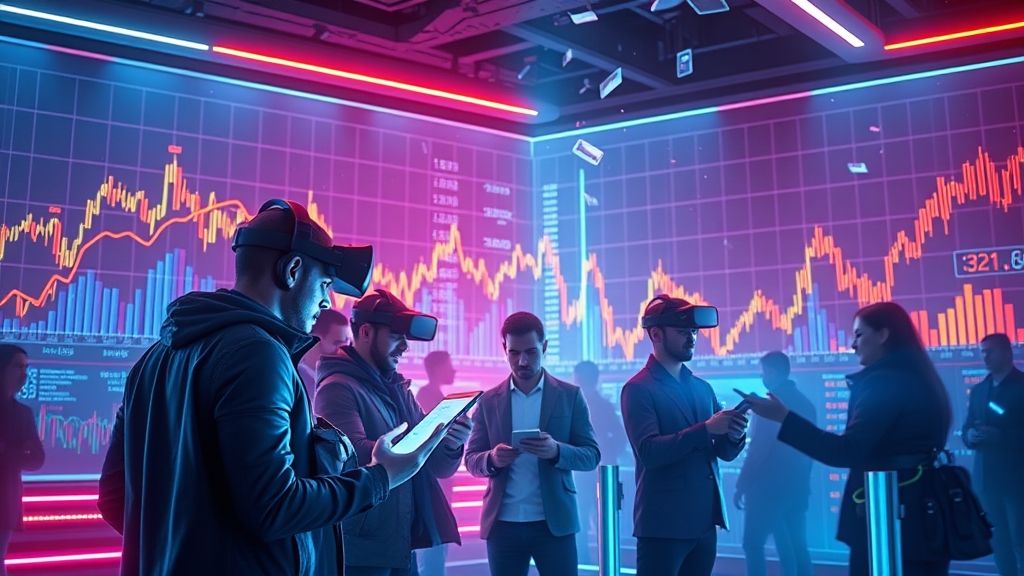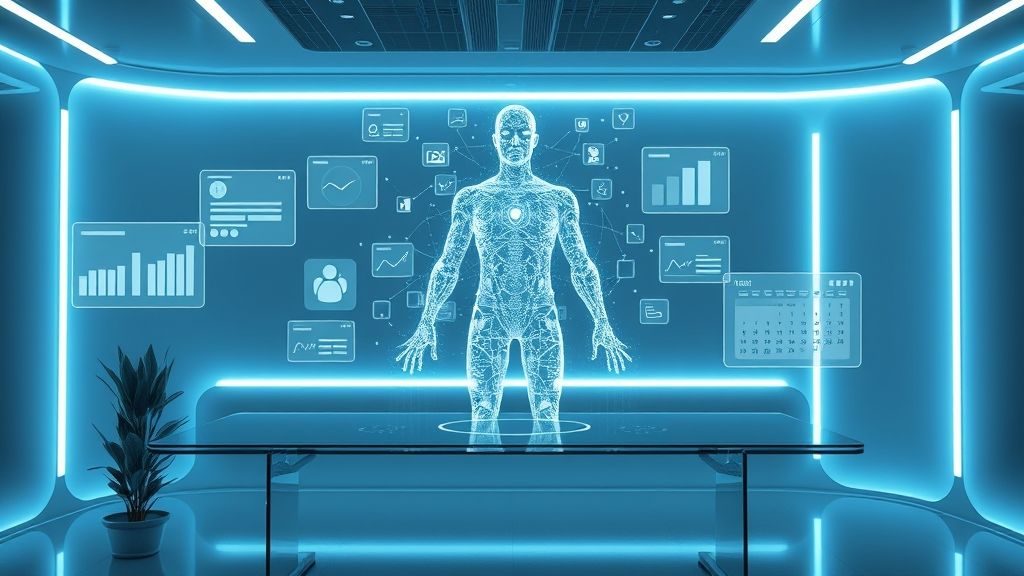By 2027, the global Internet of Things (IoT) market is projected to reach over $1.6 trillion, according to Fortune Business Insights. At the heart of this growth are smart homes and smart cities—environments where devices, systems, and infrastructure are interconnected to deliver safer, more efficient, and sustainable living. From automated lighting and security to traffic optimization and waste management, IoT is revolutionizing urban life. This blog explores how IoT applications are transforming our homes and cities—and what businesses and governments must consider as they join the smart revolution.
What Are Smart Homes and Smart Cities?
-
Smart homes use IoT-enabled devices like thermostats, lights, cameras, and appliances that users can control remotely or automate based on behavior.
-
Smart cities go further by applying the same principles to large-scale urban infrastructure—traffic lights, public transport, waste bins, power grids, and surveillance systems.
These environments are made possible by embedded sensors, real-time data collection, and centralized software platforms that help optimize everything from energy use to emergency response.
How IoT Applications Are Transforming Smart Living
1. Energy Efficiency and Sustainability
IoT applications help monitor and manage energy usage in both homes and cities. Smart meters, thermostats, and appliances can automatically adjust based on occupancy or time of day. Cities can monitor power grids in real time to reduce outages and reroute supply efficiently.
-
Smart lighting systems save up to 70% in energy costs
-
Real-time water usage monitoring reduces waste by 20–30%
2. Safety and Security
IoT-powered surveillance, motion detectors, and remote door locks offer homeowners and city officials advanced control and real-time alerts.
-
Smart homes integrate smoke detectors, gas leak alerts, and intrusion detection.
-
Smart cities employ AI-enabled cameras and emergency alert systems for public safety.
These solutions help prevent incidents and reduce emergency response times.
3. Traffic and Transport Optimization
IoT sensors installed in roads, traffic signals, and public transport vehicles collect data that city officials use to ease congestion, reroute traffic, and manage parking.
-
Smart traffic lights reduce commuting time by up to 25%
-
Real-time bus tracking apps improve ridership satisfaction and usage
In private homes, smart EV chargers monitor grid demand and optimize charging schedules.
4. Waste and Resource Management
Smart bins with fill-level sensors notify municipalities when they need to be emptied, reducing unnecessary fuel usage and improving route efficiency. Similarly, IoT water sensors detect leaks early—saving cities millions annually.
5. Health and Lifestyle Enhancements
In smart homes, IoT wearables and home health monitors track sleep, heart rate, and medication schedules. In smart cities, air quality sensors and noise pollution meters offer real-time insights that help communities take action toward better public health.
How IoT Works Behind the Scenes
For smart cities and homes to function seamlessly, they rely on a tech stack that includes:
-
Sensors and devices – collect environmental data
-
Gateways – transmit data securely to the cloud
-
Cloud platforms – store, process, and analyze data
-
Applications and dashboards – present insights for end users
-
Automation engines – trigger actions (e.g., turn off lights, reroute traffic)
Without secure, scalable software, these components remain disconnected—and that’s where experienced developers come in.
Mid-Blog Keyword Placement
Businesses and municipalities aiming to launch smart solutions often partner with a trusted software development company South Africa to build IoT platforms tailored for local infrastructure, regional regulations, and user behavior. These partnerships are critical in transforming connected devices into actionable intelligence that powers smarter living.
Challenges to Consider
Despite the promise of IoT, adoption requires overcoming several challenges:
-
Data privacy – Sensitive personal and behavioral data must be protected
-
Interoperability – Devices from different manufacturers must work together
-
Scalability – Systems must support growth in users and data
-
Connectivity – Rural areas may lack reliable internet or 5G access
-
Cost – Upfront infrastructure investments can be high
Successful smart initiatives plan for these challenges early in the development process.
Real-World Examples
Smart City: Cape Town, South Africa
Cape Town uses IoT applications for:
-
Water leak detection systems
-
Smart traffic lights
-
Smart meters for utilities
-
Real-time dashboards for city officials
These innovations have significantly improved resource management and service delivery.
Smart Home: Urban Neighborhoods in Canada and the EU
Residents are embracing integrated home automation systems that sync lighting, security, HVAC, and entertainment into one mobile-controlled ecosystem. This not only improves convenience but boosts property value and energy efficiency.
What’s Next for IoT in Smart Living?
The future of smart cities and homes is centered on AI-enhanced automation, edge computing, and predictive analytics. Imagine traffic lights that adjust in real time based on pedestrian density or homes that pre-order groceries when your fridge runs low.
As 5G networks expand and sensor costs fall, we’ll see even more accessible, widespread adoption of smart tech across both private and public sectors.
Conclusion
From smarter kitchens to sustainable cities, IoT applications are reshaping how we live, work, and interact with our surroundings. But building truly intelligent systems requires more than devices—it requires robust, secure, and scalable software to tie it all together. Whether you’re a local government or a business exploring smart solutions, the right development partner can help you turn connected potential into real-world impact.
FAQs
1. What is the difference between a smart home and a smart city?
Smart homes involve individual IoT-enabled devices for personal living spaces, while smart cities use large-scale IoT systems for public infrastructure and urban services.
2. What are the main benefits of IoT in cities?
IoT improves traffic flow, reduces energy consumption, enhances public safety, and streamlines resource management, making urban life more efficient and sustainable.
3. Are IoT systems expensive to implement?
Initial setup can be costly, but long-term ROI is strong due to energy savings, automation, and efficiency gains. Cloud-based platforms and scalable models make IoT more accessible.
4. Is IoT safe and secure for public use?
Security is critical. Proper encryption, access controls, and compliance with privacy regulations are necessary to protect user data and prevent breaches.
5. How do I start building a smart home or city solution?
Start by identifying the problem you want to solve, then consult a development partner with experience in IoT strategy, software design, and infrastructure deployment.






